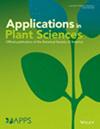Orthology inference is crucial for comparative genomics, and multiple algorithms have been developed to identify putative orthologs for downstream analyses. Despite the abundance of proposed solutions, including publicly available benchmarks, it is difficult to assess which tool is most suitable for plant species, which commonly have complex genomic histories.
We explored the performance of four orthology inference algorithms—OrthoFinder, SonicParanoid, Broccoli, and OrthNet—on eight Brassicaceae genomes in two groups: one group comprising only diploids and another set comprising the diploids, two mesopolyploids, and one recent hexaploid genome.
The composition of the orthogroups reflected the species' ploidy and genomic histories, with the diploid set having a higher proportion of identical orthogroups. While the diploid + higher ploidy set had a lower proportion of orthogroups with identical compositions, the average degree of similarity between the orthogroups was not different from the diploid set.
Three algorithms—OrthoFinder, SonicParanoid, and Broccoli—are helpful for initial orthology predictions. Results produced using OrthNet were generally outliers but could still provide detailed information about gene colinearity. With our Brassicaceae dataset, slight discrepancies were found across the orthology inference algorithms, necessitating additional analyses such as tree inference to fine-tune results.



